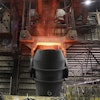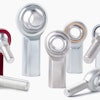Warehouse management is a critical component to the success of any industrial distributor. Understanding the technology that’s available, and identifying the right solutions to fit one’s business needs, can be a difficult task. Rick Register, President and COO of Cambar Solutions, a provider of warehouse management software, discussed the evolution of the industrial distribution marketplace, what warehouse management solutions are available to distributors, and the feedback those tools have received from distributors, in an interview with Industrial Distribution.
ID: Can you tell me a little bit about Cambar Solutions and the solutions it offers distributors?
Rick Register: Formed in 1981, Cambar Solutions is a privately-owned company based in Charleston, South Carolina. We’re focused on the mid-market today, helping distributors improve efficiencies and reduce costs in their warehouses and distribution center operations. That’s our core focus….When you look at our solutions today, our focus is warehouse management and helping distributors. We not only work directly with distributors, we work with manufacturers who have their own distribution function…Our approach on the application development side has been, while making it very feature-rich, making it such that it’s very switch-setting controlled. That allows us to go in and work with the customer and understand how its business operations work, then help them set a system up to run the software the way they need in their particular business… We believe that when we are working with our customers, that they receive a level of personalized service that is quite uncommon in today’s business world.
ID: How have you seen the industrial distribution market evolve in recent years?
Rick Register: The changes I’ve seen in the last couple of years largely have been in response to the economy. There’s hardly been anybody that’s escaped what’s happened with this economy. The focus for distributors has been trying to take cost out of operations. And they’ve all done it, whether we’re talking about your large distributors out there today, or your small ones out there. For example, they’re trying to ensure that they’re being as efficient as they possibly can in managing their warehouse space. If they have to go to outside storage, it’s costing them additional money. If they can take some of that additional cost out of the equation and manage it inside of their primary warehouse or warehouses, that’s helping them take some cost out of the equation. They’ve looked closely at personnel. They’ve looked at the labor equation they have in the warehouse. They have looked to ensure that they have the right number of people across the shifts and ensure that they get the work done. But where they can, they’ve pulled back. A lot of the discussions we’ve been having with companies, these mid-size distributors, and it’s been tough on them through this economy. They’ve done everything they can to take cost out of the equation. However, most of these mid-size companies have not made investments in technology, particularly in the warehouse. They have some core processing systems in play, they may have some degree of an ERP in play, but most do not have any warehouse management control in play… They’re looking at how (they) can take it to the next level as the economy comes back…That’s driving a lot of the conversations we’re having today.
ID: What are some of the new technologies distributors are using in the warehouse today, and how has that helped them improve efficiencies and reduce costs?
Rick Register: Our software is designed as a paperless solution. And we’re leveraging radio frequencies, scanning technologies. So I have a device that’s either hand-held, or it is a truck mount, or maybe I have it strapped to me in some way – and then I need to scan. For years, the scanners were tethered, and you were limited in what you could do. The introduction of Bluetooth has added some capabilities over the years, and more recently some of the ring scanners that have been Bluetooth-enabled. You see a lot about voice today. Voice has been around for quite awhile…The technology (once upon a time) was not quite ready…But they’ve worked the kinks out of the process a bit and it’s a much more viable solution today.
ID: The distributors that have implemented some of these cost-saving measures, what kind of feedback have you gotten from them? Have they seen the desired results from what they’ve implemented?
Rick Register: I would say so… I didn’t even mention physical inventory before. That is one of the challenges that we run into all the time. We run into companies who, without systems today, are doing a physical inventory every month. Most are doing them more than once a year and are having varying levels of discrepancy. Think about the labor that’s involved in companies that have to do that…We’re able to go into these companies and typically quickly move them from doing it once a quarter to maybe once or twice a year, and then eliminate their physical inventories.
Cambar Solutions’ warehouse management system (WMS) software delivers ROI and operational efficiency via visibility, resource management, and accuracy. For more information, visit www.cambarsolutions.com.



















